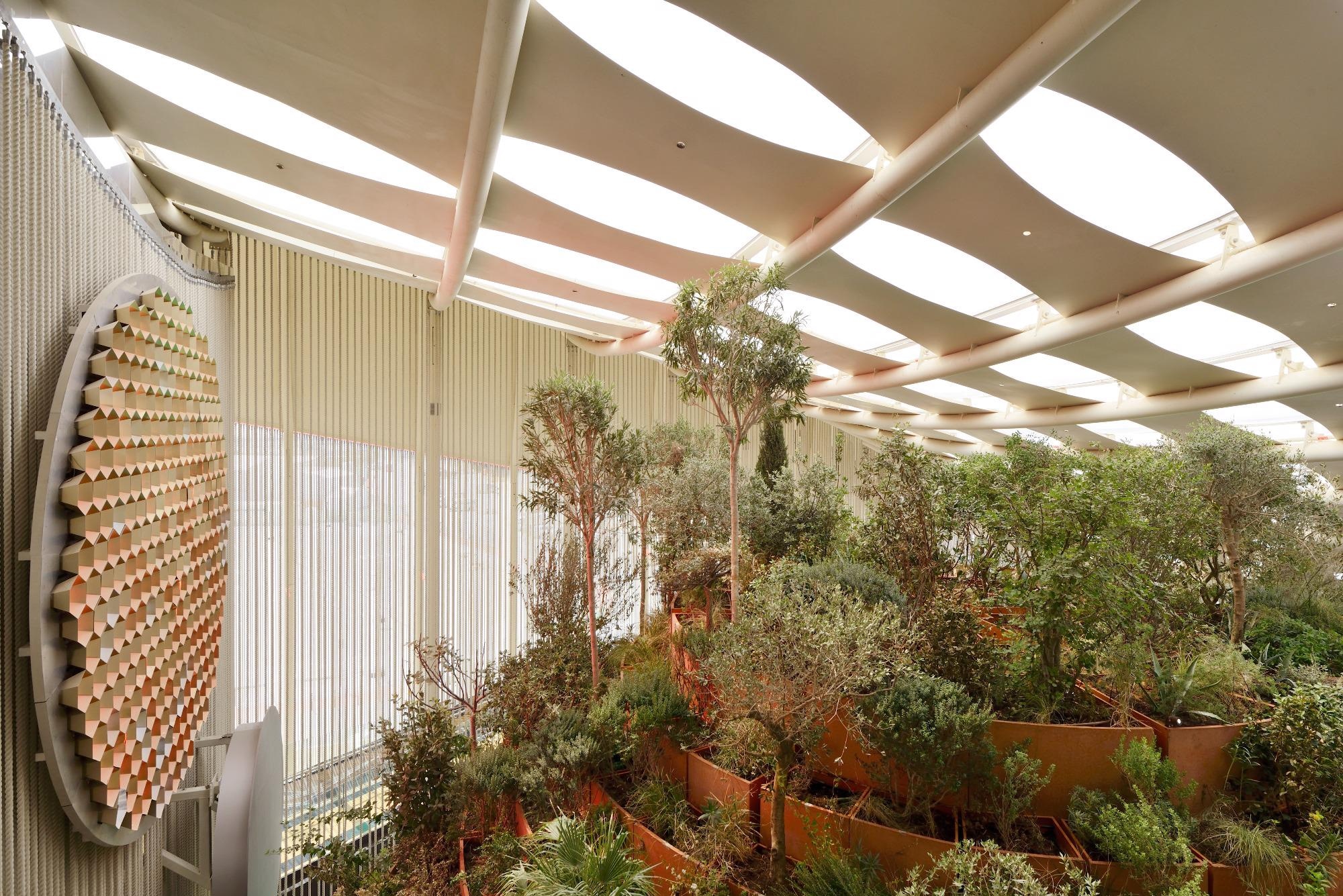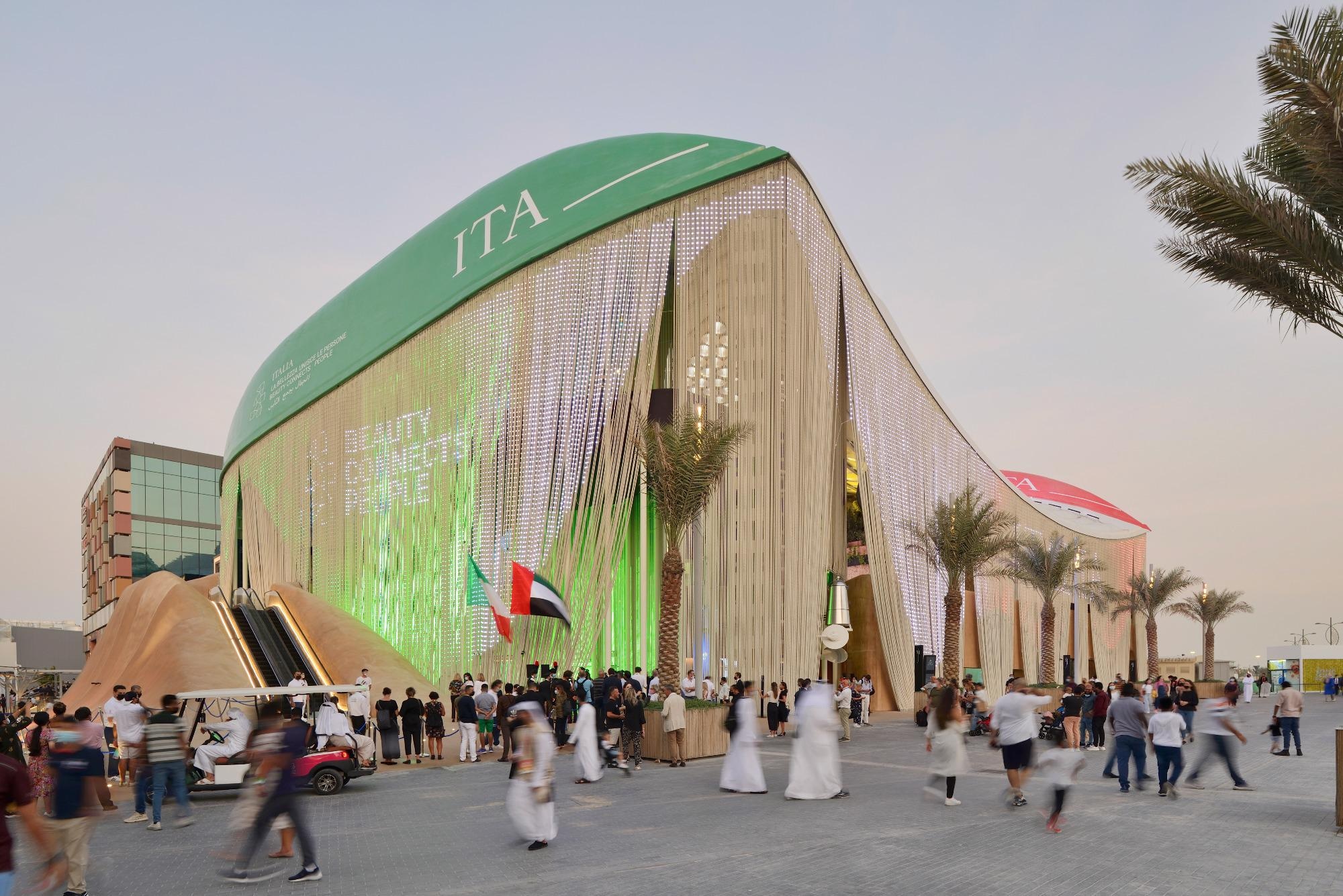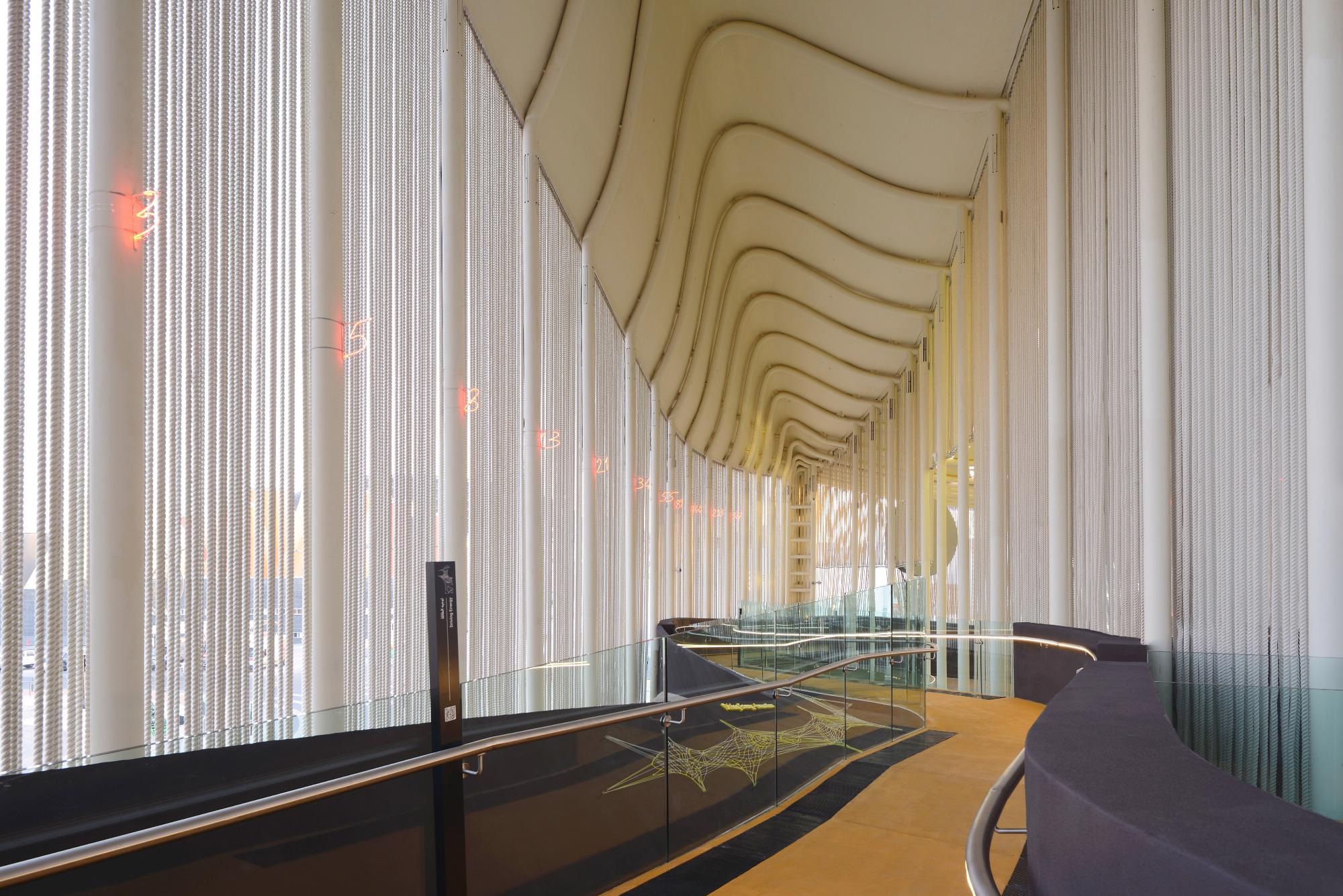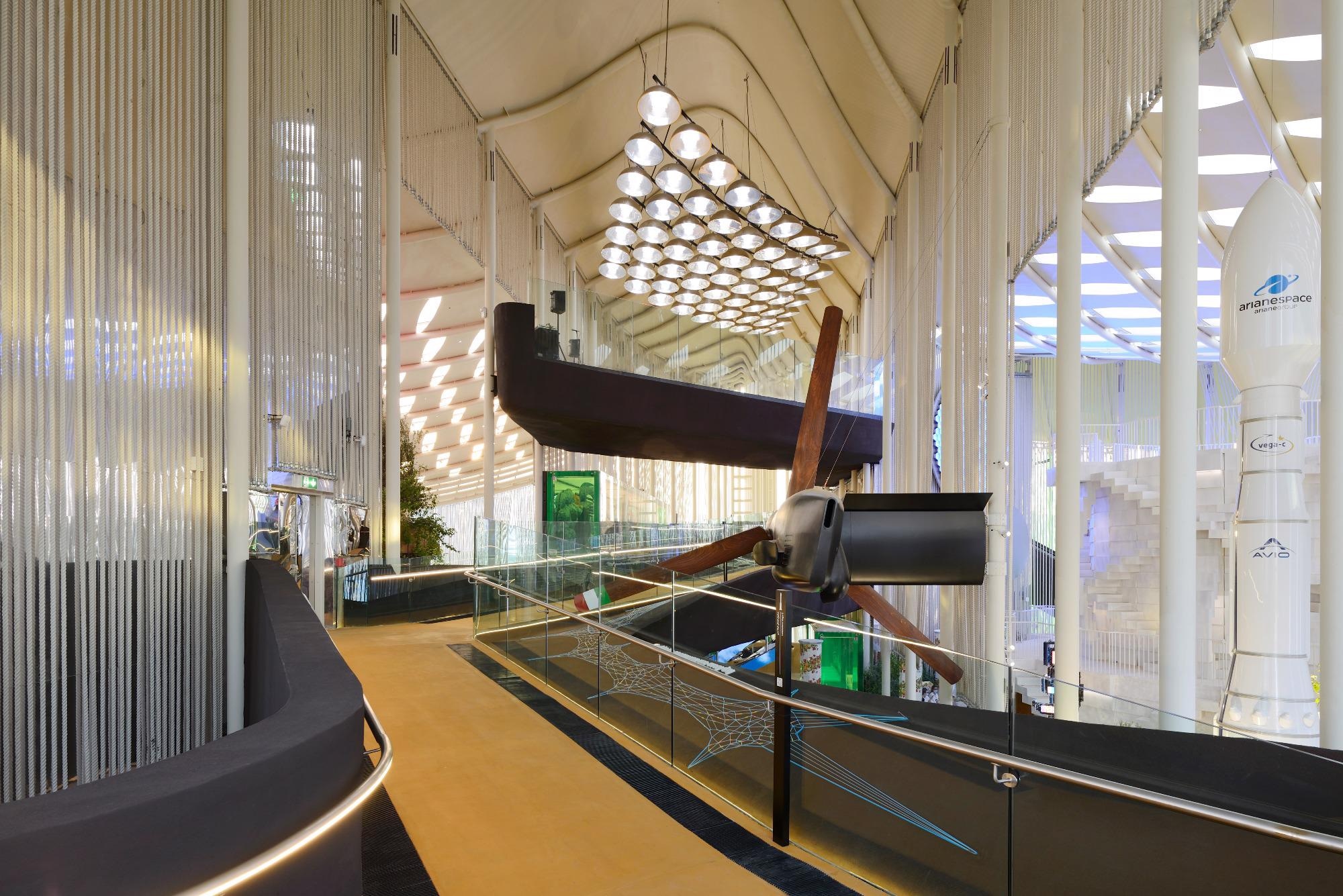It is becoming more evident that current paradigms in architecture are unsustainable. A more ecologically friendly approach must be undertaken, which will fundamentally change the way buildings are constructed. Recently, there has been much talk about moving society away from a linear economy to a circular one. This article will discuss this subject, with mention of specific examples.

Italian Pavilion Expo Dubai. Image Credit: Michele Nastasi
What is a Circular Economy?
In a linear economy, natural resources are consumed to produce products that will become waste. This is the overarching model currently employed across the world in construction and industry. Although recycling and reuse of products have become more common in recent decades, the world still has a problem with the exploitation of dwindling resources, greenhouse gas emissions, and waste.
A circular economy, on the other hand, aims to create a closed-loop by utilizing practices such as reusing, sharing, recycling, repairing, and remanufacturing. In a circular economy, natural resources are maximized, avoiding exploitation of these resources, and leading to reduced carbon emissions and waste.
The circular economy has restoration and regeneration at its heart and seeks to circumvent the worst effects of climate change and the ecological impact that human society has caused.
How Can Architecture Move Toward a Circular Economy Model?
The construction industry, traditionally, has been based on a linear economy model. To move toward a circular model, the construction industry must make some fundamental changes. Firstly, it must view waste as a resource rather than something to be disposed of at the end of a building’s life cycle.
The industry must also be willing to make use of natural, renewable resources, and materials and waste that cannot be reused must be separated and sent for recycling.
Moreover, the industry must improve the recycling of construction and waste materials. Designing new processes specifically for the construction and demolition industries should be a focus of the sector. However, the move toward a circular economy will not just need new recycling processes.
It will also need innovation within the construction sphere, with investment in research into new materials, building design, construction methods, waste management, along with governmental legislation.
Demolition, excavation, and roadworks all create unsustainable levels of waste, with 50% of this waste composed of building materials such as wood, concrete, asphalt, and gypsum. Only 2% of all construction waste is currently recycled globally and, in the US, the demolition industry has generated 125 million tons of waste since 2019. Most of these materials, much of which could be recycled, goes to landfill. However, progress has been made over the past few decades.
Innovation in the Sector
Innovation is at the heart of the industry’s move toward a circular economy. Today, there are numerous examples of new approaches within the construction sector that adopt the principles of reuse and recycling.
UK company Econpro has created products that use recycled construction and demolition waste. Two of their flagship products are Durakerbs and Duradrains, which are made out of recycled polymers. The percentage of recycled polymers in these products is 88%, equivalent to 182 plastic bottles. Four hundred thousand durakerb units have been installed in UK and Irish highways.
Reusing materials saves on production costs, carbon emissions, and waste going to landfills. Duncan Baker-Brown’s 2014 Waste House project, carried out in conjunction with the University of Brighton in the UK, used over 85% of recycled construction waste. In Brussels, the glass atrium of the European Union’s headquarters, designed by Samyn and Partners, used 3,750 recycled windows.
Carlo Ratti at the Expo 2020 Dubai: Exploring the Circular Economy
To face the challenges of the future, many companies are producing bold, novel approaches to building construction that make use of materials and processes which encourage the move toward a circular economy and tackle climate change. A notable example is the design of the Italy pavilion at Expo 2020 Dubai created by CRA-Carlo Ratti Associati and Italo Rota Building Office with Matteo Gatto and F&M Ingegneria.
AZoBuild Talks to Carlo Ratti Associati - Architecture Meets Agriculture in the Jian Mu Tower
This pavilion showcased circularity and reconfigurable architecture. The pavilion used organic construction materials such as coffee grounds as well as recycled boat hulls for the pavilion’s roof. Additionally, the ropes, which provide natural ventilation, cooling, and shading system, were made from recycled plastic.

Italian Pavilion Expo Dubai. Image Credit: Michele Nastasi
The suspended walkways within the structure were coated with coffee grounds and orange peel powder, and the entire structure rested on a sand dune that was locally sourced. Plants featured extensively throughout the pavilion, exploring the increasing connection with the natural world typical of biophilic design.
The creation of a natural air conditioning system with the use of design elements and materials was a key element of this experiment. Another forward-thinking element was the ability to reconfigure the pavilion for future use. The team designed architecture that could sustainably transform itself over time. Long-term circularity in terms of reuse and short-term circularity in terms of digital technology was demonstrated.

Italian Pavilion Expo Dubai. Image Credit: Michele Nastasi
The boundaries between the built environment and nature are becoming increasingly blurred, which was reflected in the pavilion’s experimental design. Taking inspiration from natural biotypes and using space-age materials with a biological and organic origin (neo-materials) the team designed the pavilion to mimic natural forests and demonstrate a new circular design paradigm to inspire future architects to explore the circular economy.
The Future
Bold, innovative approaches will be required to move architecture toward a circular model. By doing so, the urban areas of the future will become greener and more sustainable, and the construction industry will reduce its dependence on fossil fuels and dwindling resources.

Italian Pavilion Expo Dubai. Image Credit: Michele Nastasi
Further Reading
Carlo Ratti (2021) Italian Pavilion at Expo 2020 [online] Carloratti.com. Available at: https://carloratti.com/project/italian-pavilion-at-expo-dubai-2020/
Pasquale, A (2019) Creating a Circular Economy for the Construction Industry [online] greenbuildingadvisor.co.uk. Available at: https://www.greenbuildingadvisor.com/article/creating-a-circular-economy-for-the-construction-industry
Durakerb – Homepage [online] durakerb.com. Available at: https://www.durakerb.co.uk/
Dobric, M (2021) 41 Eye-Opening Recycling Statistics for 2021 [online] petpedia.co. Available at: https://petpedia.co/recycling-statistics/
Williams, F (2020) Virtuous circles: Can reusing building materials in new projects go mainstream? [online] Architectsjournal.co.uk. Available at:
https://www.architectsjournal.co.uk/news/virtuous-circles-can-reusing-building-materials-in-new-projects-go-mainstream
Disclaimer: The views expressed here are those of the author expressed in their private capacity and do not necessarily represent the views of AZoM.com Limited T/A AZoNetwork the owner and operator of this website. This disclaimer forms part of the Terms and conditions of use of this website.